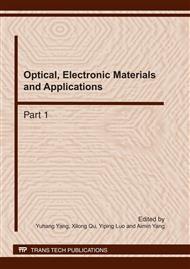p.1
p.6
p.11
p.16
p.21
p.25
The Design of the Heterotypic Antenna Array of the Smart Antenna with the LMS Algorithm
Abstract:
Using the Least Mean Square (LMS) algorithm, this paper simulates two smart antenna models under the same signal environment. By analyzing and comparing 8-antenna elements linear array and 2*4- antenna elements rectangular array, this paper proposes the way to design the heterotypic antenna model. This antenna array can help system to gain similar performance of signal to interference plus noise radio(SINR) with reduced size of the antenna. The paper realizes the simulation of two models with the LMS algorithm. The antenna pattern and the curve about convergence of error have been given. It also analyzes the influence of the step length factor on LMS algorithm performance, and finds out the reasonable step to ensure fast algorithm convergence and to suppress interference effectively.
Info:
Periodical:
Pages:
6-10
Citation:
Online since:
March 2011
Authors:
Keywords:
Price:
Сopyright:
© 2011 Trans Tech Publications Ltd. All Rights Reserved
Share:
Citation:


